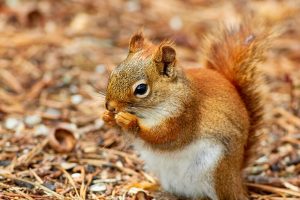Come spring, and you will find these tiny, yet swift birds fly around your garden—busy collecting nectar from flowers. You could also try installing bird feeders with nectar for these small birds. Watching these birds in action will take you away from all the stress of your daily life. Investing in bird feeders may not cost you much; however, home-made customized bird feeders are a great way of putting your artistic skills to test. You could also make way for a greener initiative by using old materials for the feeder. Take a look at the different DIY ideas to help you make a fantastic hummingbird feeder at home. This way, you save money and also make sure you attract the hummingbird population to your garden.
Try this DIY bird feeder made using recycled materials. You could also consider gifting this artwork to that avid gardener friend or bird-loving family.
What will you need to make this bird feeder?
- 1 empty plastic bottle – preferably one with a screw top.
- 1 plastic cap which comes as part of aerosol spray cans. (Pick up one that is red)
- 80 grit sandpaper.
- Spray Paint.
- Red craft felt. (hummingbirds love red)
- Craft knife.
- Glue
- Screwdriver.
- String and small eye hook for hanging the feeder.
Steps to making the hummingbird feeder
Step 1
Cutting the middle portion of the screw cap using the craft knife. It will easier if you drill holes on the cap with a screwdriver and then cut it with a knife. You can heat the screwdriver over a stove and make holes on the cap. This part is not going to be visible, so do not worry if the cut looks awkward.
Step 2
Take the larger plastic cap. You can use the cap from a can of cooking spray. Go for the one that is red to attract these tiny birds. You will have to cut it to make it shorter. You will need it to be only 1.5 to 2 inches tall. Cut it using a craft knife.
Step 3
Use a glue gun to fix the screw cap with the larger plastic cap. Heat the glue gun. Now keep the screw cap suspended in the larger cap. Hold it in such a way that the edge of the small-cap is just above over the larger one. The warm glue should be used to build a bridge attaching the larger cap with the smaller one. Special care should be taken while you do this, as you will need to leave small gaps for the nectar to flow.
Step 4
Take the plastic bottle and remove the label from it. Use the sandpaper for sanding the bottle gently (not too hard). Paint the container with the color of your choice. Spray paint is preferable, and you might be required to apply a few coats. Keep the bottle aside for the paint to dry.
Step 5
While you wait for the paint to dry, you can make flowers for the outer decoration. Use the craft felt to create flowers. Make lots with the color red. You can probably make 6-8 flowers.
Step 6
Once the paint on the bottle has dried, you should screw in the cap tightly. Use the screwdriver or drill to make a hole at the bottom of the container. Put the eye hook.
Step 7
Take the felt flowers and stick them around the cap. This should be around the glued bridge we made for attaching the caps. Leave space between the flowers. Now thread the eye hook by using a twine or wire. Voila! You have your bird feeder ready. Now, lookout for an ideal location to hand this nectar feeder. Go for a shady place away for direct sunlight so that the nectar does not evaporate due to the heat. Choose a spot that can be easily spotted by the bird and yourself, so you will know when it needs refilling.
Now time to make some sugar syrup using 1 cup water and ¼ cup granulated sugar. Do not fill the feeder with more sugar syrup as it will ferment over time. You will also have to rinse the bottle every couple of weeks.
Now that we have given you the easiest way to help build a hummingbird feeder so that you can have the company of these beautiful and energetic birds. Having these birds around your home not only adds more beauty to your home but also helps in maintaining a healthy habitat.
Please share your experiences and feedback in the comments section of this article. Also check out our DIY Squirrel Feeder project.








